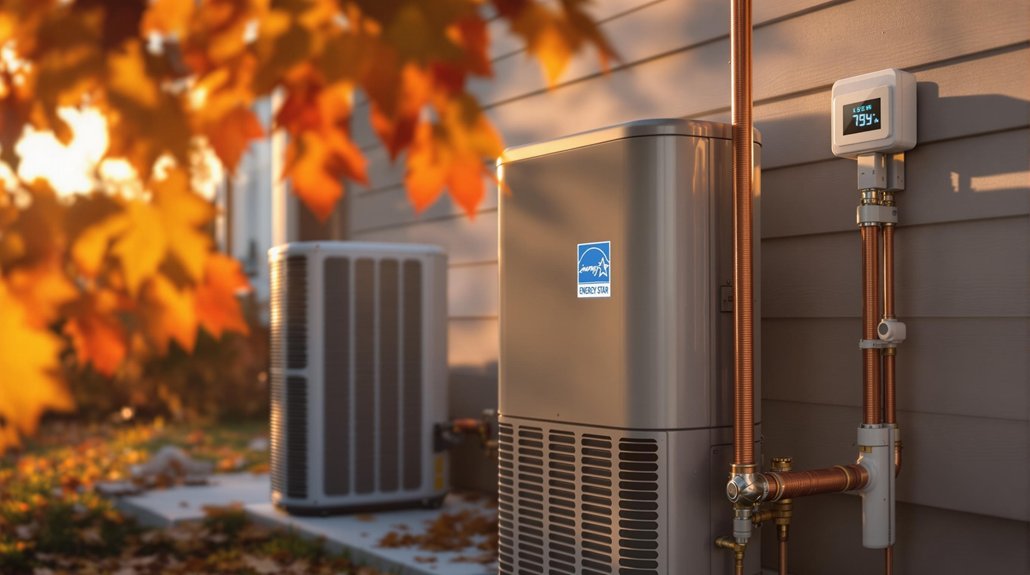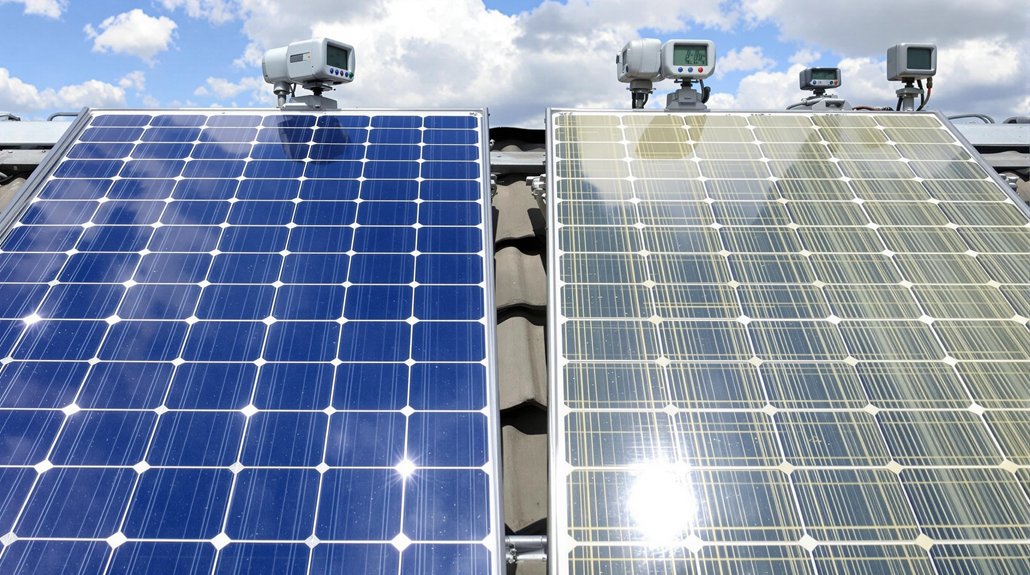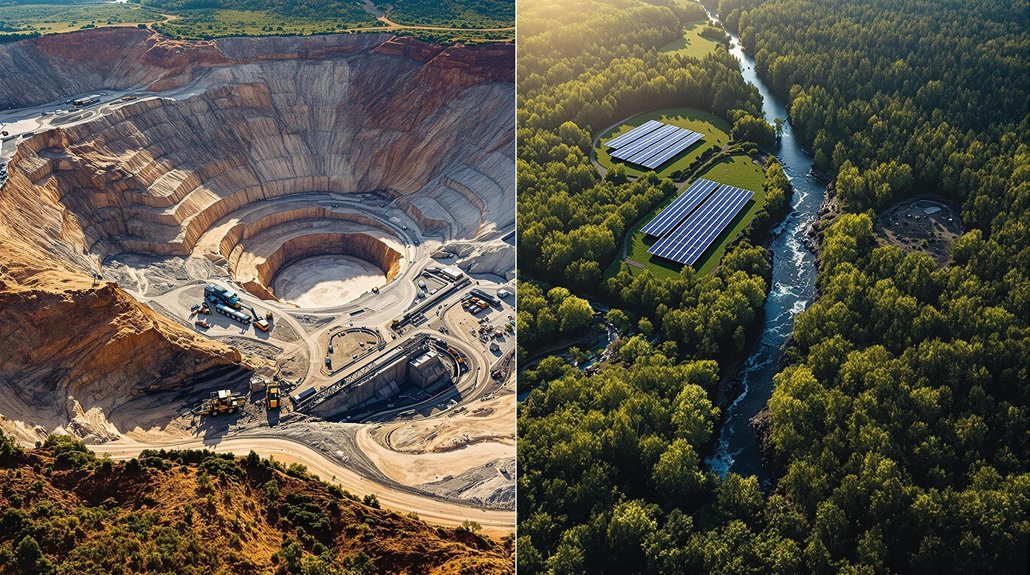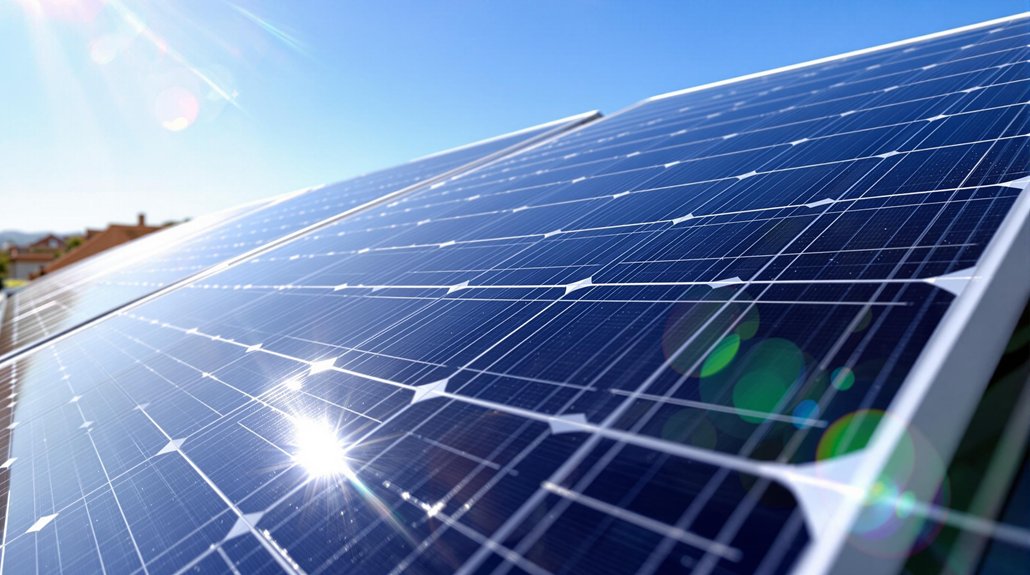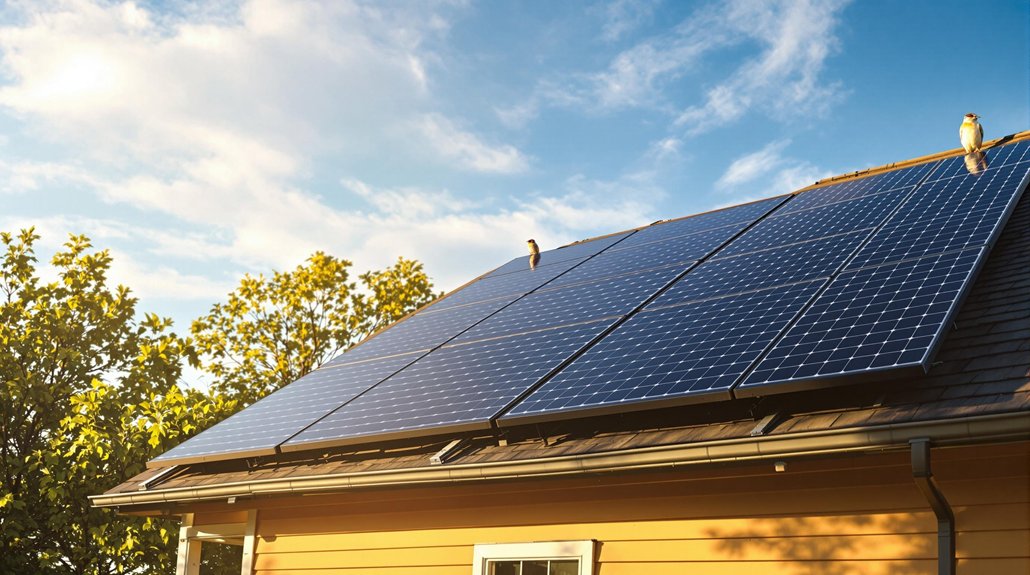Heat pumps operate with impressive 300-400% efficiency, producing 3-5 units of heat for each energy unit consumed. They’re markedly more efficient than traditional heating systems, potentially cutting heating costs by 30-60%. Performance varies based on outdoor temperature, proper sizing, and installation quality. Regular maintenance guarantees peak operation. Ground and water-source models maintain better efficiency in cold weather than air-source units. Exploring heat pump options reveals considerable long-term environmental and financial benefits.
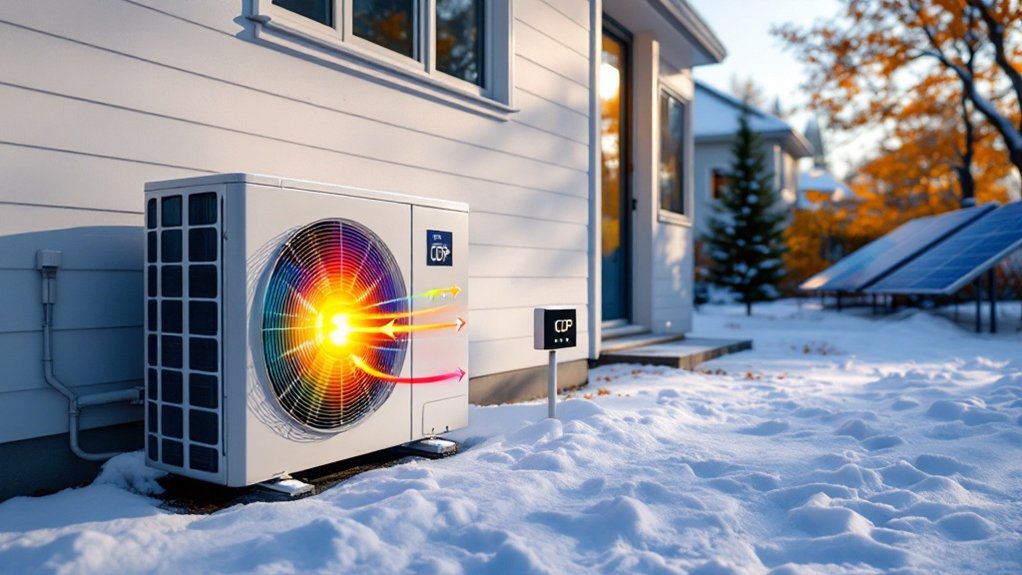
As energy costs continue to rise, homeowners are turning to heat pumps as an efficient alternative for heating and cooling their homes. These systems offer impressive efficiency measured by the Coefficient of Performance (COP), which typically ranges from 3.0 to 5.0. This means for every unit of energy used, a heat pump can produce three to five units of heat. Modern heat pumps can achieve efficiencies of 300-400%, considerably outperforming traditional heating methods.
Heat pump performance varies based on several factors. Outdoor temperature plays a major role, with efficiency decreasing in extreme cold. The heat source matters too – ground and water-source heat pumps maintain higher efficiency in cold weather than air-source models. Proper sizing and installation quality also affect performance. Heat pumps achieve their high efficiency by moving heat rather than generating it through combustion. Today’s technological advances include variable-speed compressors, improved refrigerants, and cold climate models that work effectively even in sub-zero temperatures.
Heat pump efficiency fluctuates with outdoor temperatures and source type, but modern technologies now overcome even extreme cold challenges.
Seasonal performance metrics help consumers compare heat pump efficiency. The Heating Seasonal Performance Factor (HSPF) measures heating efficiency over an entire season, with current standards requiring a minimum of 8.2. The Seasonal Energy Efficiency Ratio (SEER) measures cooling performance, typically ranging from 14 to 25. Higher numbers indicate better efficiency in both cases. Regular professional inspections that include checking refrigerant levels are essential for maintaining these efficiency ratings.
The financial benefits of heat pumps are substantial. Compared to electric resistance heating, they can reduce costs by 30-60%, potentially saving homeowners $300-$1,000 annually. While installation costs are higher, the payback period is typically 5-10 years through energy savings.
Heat pumps also offer environmental advantages. They produce fewer greenhouse gas emissions than fossil fuel heating systems and can be powered by renewable electricity for zero-emission operation. This helps reduce dependence on fossil fuels and supports decarbonization efforts in the building sector.
Regular maintenance guarantees peak performance. Clean filters, consistent temperature settings, and proper insulation all help maximize heat pump efficiency. When installed and maintained correctly, heat pumps provide both economic and environmental benefits for years to come.
Frequently Asked Questions
What Is the Lifespan of a Heat Pump?
Heat pumps typically last between 10-15 years for standard air-source models, while geothermal systems can function for 20-25 years.
Newer models might reach 20 years with proper care.
Ductless mini-splits have a wide range of 10-30 years.
Lifespan depends on installation quality, maintenance frequency, climate conditions, and system size.
Regular professional check-ups and changing air filters can help extend a unit’s operational life.
Can Heat Pumps Work in Extremely Cold Climates?
Modern heat pumps can work effectively in extremely cold climates. Advanced models operate efficiently down to -15°F or lower.
They maintain over 70% of their heating capacity at 5°F compared to warmer temperatures. Technologies like variable-speed compressors and improved refrigerants enable this cold-weather performance.
Studies show they can reduce heating energy use by 35-56% in cold regions. Many homes in frigid areas now rely on them year-round.
How Noisy Are Heat Pumps During Operation?
Heat pumps typically produce noise levels between 40-60 decibels at one meter distance, similar to moderate rainfall or normal conversation.
Indoor units are quieter at 18-30 decibels, while outdoor units reach about 60 decibels. Ultra-quiet models operate below 50 decibels.
Noise comes mainly from the compressor and fan. Factors affecting noise include the model design, installation location, maintenance condition, and operating temperature.
Many countries regulate heat pump noise through specific laws.
Do Heat Pumps Require Special Electrical Wiring?
Heat pumps do require special electrical wiring. They typically need a 240V power supply and a dedicated 30-amp circuit, though larger systems may require up to 60-amp circuits.
Proper wire gauge is essential, and an outdoor disconnect switch is mandatory. The installation includes both high-voltage power wiring and low-voltage control wiring.
Most jurisdictions require permits, inspections, and compliance with electrical codes for heat pump installations.
Are Heat Pumps Environmentally Friendly Compared to Traditional Systems?
Heat pumps are considerably more environmentally friendly than traditional heating systems.
They don’t burn fossil fuels, eliminating direct emissions. With efficiency rates of 300-400% compared to 95% for traditional heaters, they use less energy overall.
They’re projected to reduce global CO2 emissions by 0.5 gigatonnes annually by 2030. Their environmental benefits continue to grow as electricity grids incorporate more renewable energy sources.
